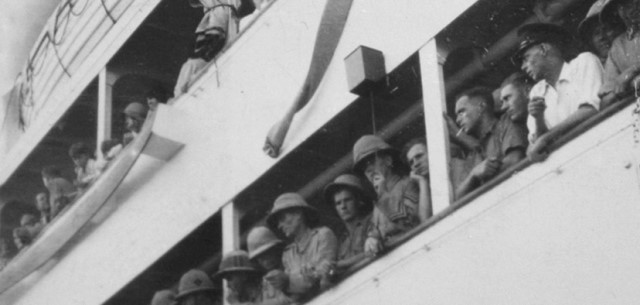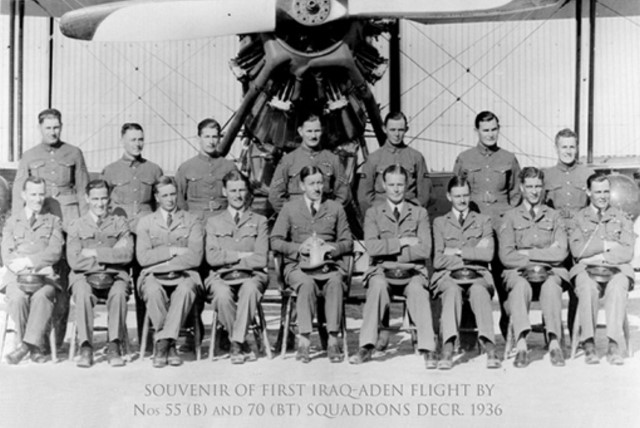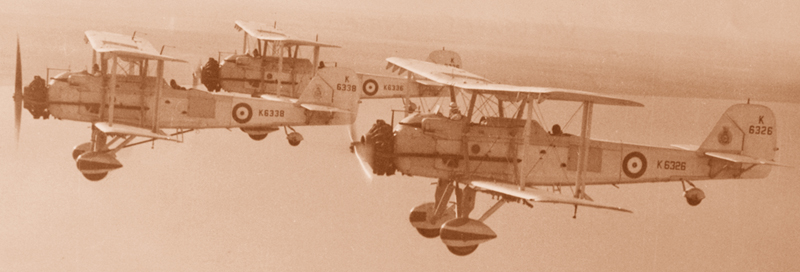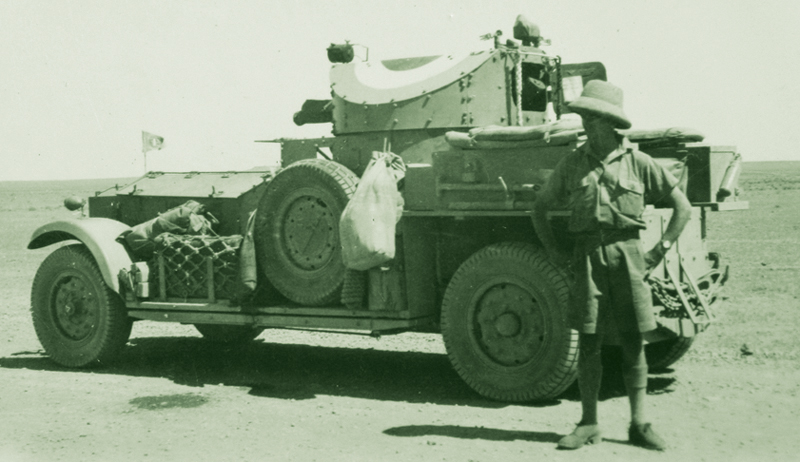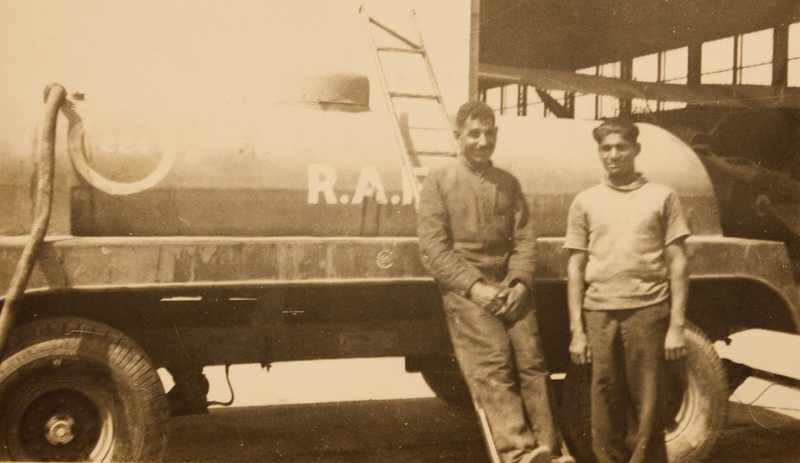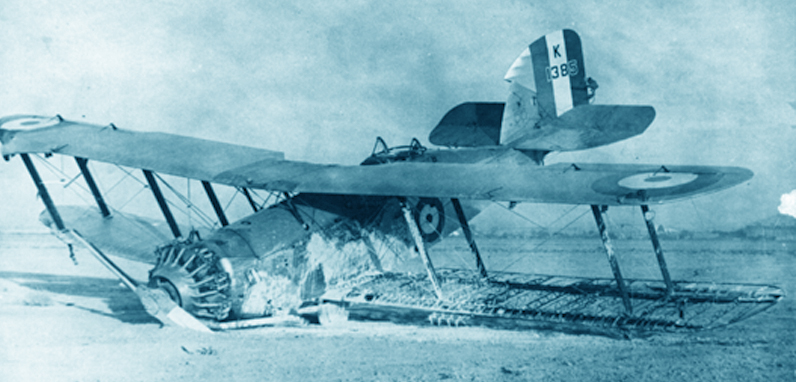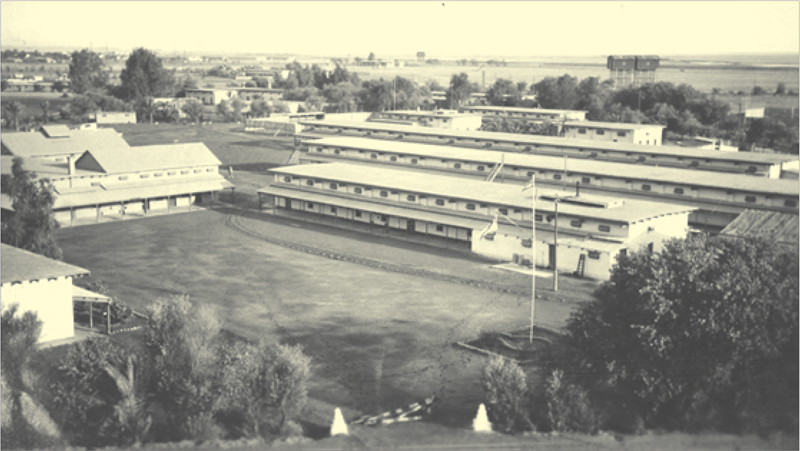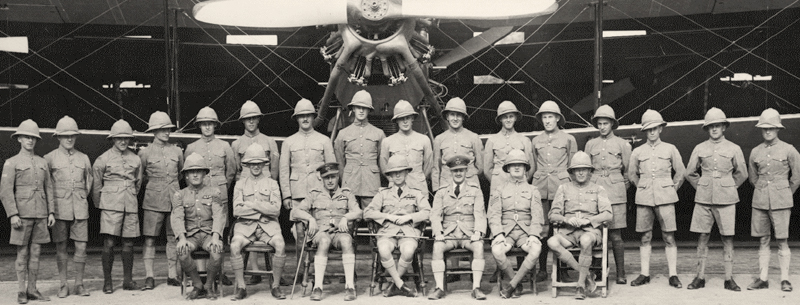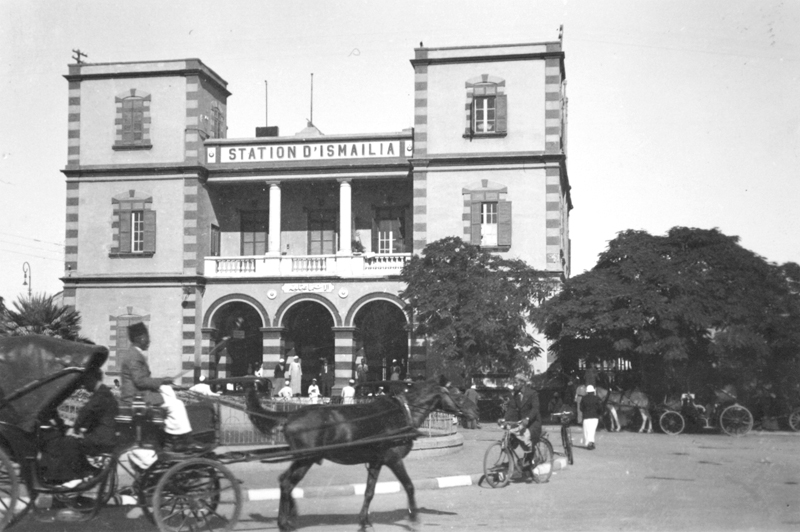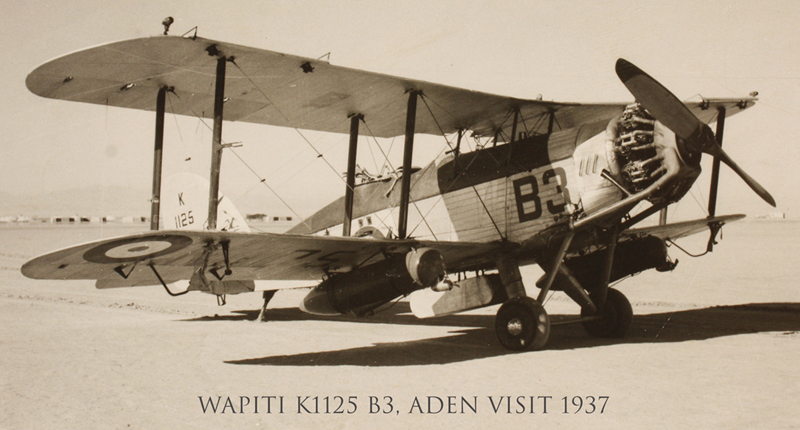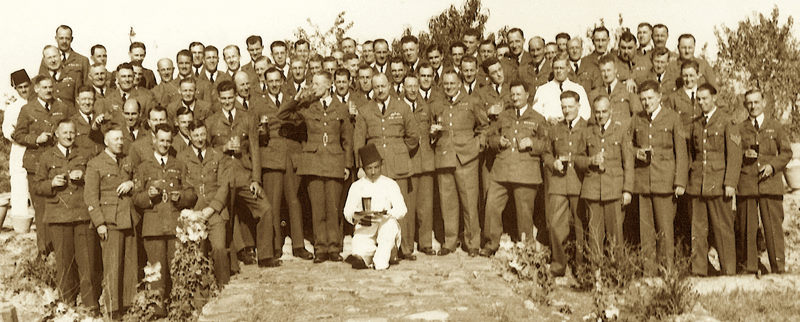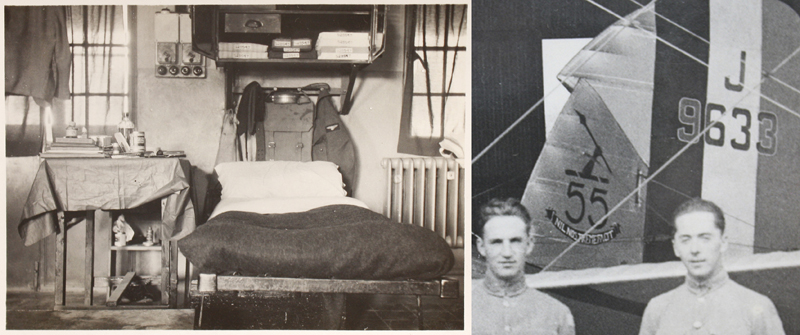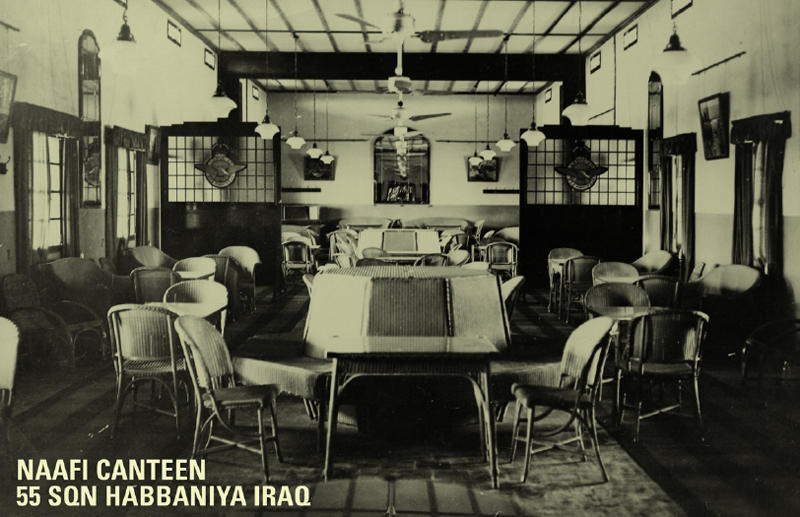A fitters reminiscences of 55 sqn in Iraq.
Iraq Nov 1936 – March 1939 by D.A. Emm, Cpl fitter 1
Pt 1 – Dec 2010
Illustrated with servicemens’ and official pictures from the 1920’s-1930’s
Above: “Officers and families on upper deck, soldiers and airmen on lower. 22nd Nov 1931”.
INTRODUCTION
After WW1 and British defence cuts, the newly-independent RAF later found itself taking up the task of policing troublesome British interests from the air. After three months in Turkey No.55 Squadron moved in August 1920 to Mosul in Northern Iraq, to fly the DH9A on ‘Air Policing’ duties, a task it was to carry out for the following 19 years. Many tribes in Iraq were led by Sheiks who had little hesitation in attacking their neighbours while robbing them of their livestock, goods and men, and the British Government in its aim of protecting trading routes had attempted initially to maintain and enforce peace with units of the Army. They quickly found this too costly however, the distances involved being too great to rush a column of men rapidly into trouble spots which could flare up suddenly and were ever-changing.The Royal Air Force therefore was called in to carry out a policy of Air Control over local villages, and these records of CPL Fitter 1 D.A. Emm along with service photographs of the period, give a good flavour of these days of declining empire, just before WW2. Ed.
The troopship H.M.T.S. Dorsetshire bumped over the sand bar at the mouth of the Shatt-El-Arab just after dawn one morning, after a three week voyage from Southampton, calling at Malta, Port Said and Aden. The ship was painted white, and had a blue band around it like an airman’s kit bag – and it was packed like one! A day’s trip up river saw the mooring at Margil (a suburb of Basra) in the early evening, having passed the flying boat base of 208(?) Sqn a mile down river, where the local “sweats” had cheered us past with yells of “you’re going the wrong way” and displaying a large banner with an arrow pointing down river and the caption “Blighty 6,000 miles”.
Above:”Cooking the food” Nov 10th 1931 on the Baghdad train.
BAGHDAD-BOUND BY TRAIN
After disembarking, a short walk – dragging their kit bags behind – brought the troops to Margil railway station, where names were called out in batches of twelve; each party being allocated to a covered iron cattle truck marked “8 horses or 12 men”. These trucks were coupled to the tail end of a three coach train, the coaches being occupied by P.M.R.A.F.N.S. staff and higher ranks. The troop trucks had four unsprung wheels which bounced along the very uneven narrow guage track in a most uncomfortable manner.
As each party en-trained into their allocated trucks, an inventory check revealed:- 2 blankets per man, a box containing firewood, matches and two working hurricane lamps. Another box contained 12 loaves of bread, tins of bully beef, rolled bacon, sausage in lard, eggs, and machoneckies stew, all these items being viewed with dismay by some of the more younger members of the party.
As evening darkened, we were told that we would arrive in Baghdad in 24 hours time and there would be stops during the following day to get out and cook our food. In our compartment we had some difficulty getting one of the hurricane lamps alight properly as it continued to fill the truck with sooty smoke and fumes. At this moment, just before moving off, a final roll call was made, and some poor soul named Gascoigne seemed to have got himself lost. A sergeant stuck his head through the door and called “Have you got a Gascoigne here?” To which came the immediate reply “No sarge – it’s a smokey old hurricane lamp we’re trying to light”.
The night was hot and the air within the trucks was suffocating as we rumbled across the desert northwards, and it was debatable whether to leave the iron double doors on each side of the truck open and endure the dust as it swirled in, or to close them and suffocate – we endured the dust. The iron floor was hot and did not provide a good bed as it jolted up and down, and each somewhat dazed and confused body tried not to lie on a line of monstrous rivet heads.
Above: Engine Sheds at Baghdad looking West, 6th Mar 1930.
DODGNG THE IRAQI “DRAFT’
At midnight the train slowed down on its single track and halted on a double-track system at Babylon Junction, where within a short space of time a train similar to ours, pulled up alongside us going south, whereupon a most unholy uproar started from the inmates of this southbound train. There were yells of “get some in”, “You’re going the wrong way” and other shouts mostly unrepeatable, all this accompanied with missiles hurled through our open door such as empty tins, beer bottles, eggs, and even the odd topel. We learnt later that this was the outgoing Iraqi draft going to join the “Dorsetshire” waiting at Basra, some to go home to the UK, and some to do a further 3 years in India to complete their tour of 5.
Eventually we parted our ways and the rest of the night was spent in fitful sleep. At dawn we stopped at some wayside halt with no sign of habitation and a flat stony dusty landscape undulating to each horizon. There was a form of station house there and some extremely primitive toilets. Here we lit fires and those with some culinary talent made a breakfast for our truckmates, a large Dixie of tea being passed down the line from somewhere up near the engine. And so the day progressed in this fashion with stops for a midday meal and late afternoon tea, anything between consisted of water from our bottles (warm) and iron ration biscuits.
Above: “My load, Volunteer L.H.D. Convoy driving Habb-Ismalia. Self – George – Mick”. The kind of transport that D. Emm entered Baghdad in with many others, over the years before WW2.
ARRIVAL IN BUSTLING BAGHDAD
Two hours before sunset we pulled into Baghdad at the end of the line, everyone coated from head to foot in khaki-coloured dust. We de-trained and piled into Leyland lorries and headed for the Allenbury Bridge, a floating pontoon affair across the muddy Tigris River; here we had to jump out of the lorries and walk across, as the pontoons would not stand the weight of the loaded vehicles; as it was, some pontoons looked somewhat low in the water and the roadway besides housing A-H-Q, British Consul Hospital, RAF No.4 Armoured Car Company, the Aircraft Depot (M.U.), No.70 (Bomber Transport) Sqdn and of course the famous 55 (LB) Sqdn. No.1 Royal Iraqi Air Force Squadron were also housed on one side of the airfield alongside ‘C’ Flight 55 Sqdn.
Our arrival at the Squadron Compound was greeted by some friendly catcalls from members of the Squadron, who had turned out to greet us; after a quick roll call (there were only 8 of us), we greenhorns were each taken under the wing of one of the old sweats, who bedded us down, took us to the dining hall for dinner and then to the canteen for the remainder of the evening; all the while giving us all the local gen on routine and initiating us into the mysteries of Irqui dinars and fils. We also readily learnt the squadron’s favourite Boat Song.
TO THE IRISH LILT ” A LITTLE SPOT OF HEAVEN”
A little spot of mutti fell from out of the sky one day
And it fell into the Persian Gulf
In a spot so far away
And when the Air Force saw it
Sure it looked so b—— bare
They said That’s what we’re looking for
We’ll send our Air Force there.
So they sent out river gunboats
Armoured cars, and A-H-Q.
And they sent the famous (shout) 55
Out in the b—— blue
And Pichi I’ll be going to a land that’s far remote
So-oo until then you’ll hear me sing
Roll on that xxxxxxx boat.
And so we joined The Squadron.
Above:”Souvenir of first Iraq-Aden flight by Nos 55 (B) and 70 (BT) Squadrons Decr. 1936″
THE SQUADRON & ITS AIRCRAFT
No.55 LB (Light Bomber) Squadron, stationed at Hinaidi, was composed of three flights of four aircraft each, of Westland Wapiti’s. Each flight numbered its aircraft as A1 A2 A3 A4, (or B or G) and the number was painted in large characters on each side of the fuselage in the colour of the flight, wheel discs, propeller bosses, and the Flight Commanders fin and top centre section, were also painted; the colours (which were universal in the R.A.F. at that time) were red for ‘A’ Flight, yellow for ‘B’ Flight and blue for ‘C’ Flight.
The Wapiti’s were equipped for desert work and besides the aircraft covers, carried a ‘hard tack’ ration pack, a 10 gallon tank of water, first aid kit, and most important of all, doped under a patch of fabric beside the rear cockpit, was the “Gooli Chit’ This last item was carefully checked by ground crew and pilots at very frequent intervals. It consisted of a piece of card folded in three, each section being printed in Arabic, Turkish, and Kurdi, and stated in effect, that if the occupants were returned to their base unharmed, the sum of 300 dinars (£300) would be paid for each man so delivered -a veritable passport for manhood!
Above left: A loaded Wapiti of ‘B’ Flight opens up the throttle for take-off. Wapiti’s were equipped for desert work and besides the aircraft covers, carried a ‘hard tack’ ration pack, a 10 gallon tank of water, first aid kit, and most important of all, the “Gooli Chit”.
SQUADRON ROLE
The role of the Squadron, was basically to patrol the oil pipeline across Iraq from the Kirkuk oil fields to Rutbah Wells, from where the Squadron based at Amman Transjordan would continue the patrol to Liaifa. Also visits were made to various landing fields in the Kurdi Hills to the north in order to check petrol stores, pay the local chiefs to keep in with us, and to visit the ALO’s (Air Liason Officers – actually political agents). Some of the areas were a bit difficult to get to. Penuwin and Chemchemal were in deep gorges, and Diyana was in a sort of ampitheatre a couple of thousand feet below the surrounding mountain tops (10,000 -12,000 ft). The favourite way of getting out of Diyana was, instead of circling around to get into a mile wide crack in the ground near the landing field, and weave along it until one came out about 70 miles later on to the plains of Iraq. This was the Rowanduz Gorge and aircraft would play “follow my leader” in line astern for about forty minutes.
A further duty was to liaise with the R.A.F. Armoured Car Company, who were engaged on survey and mapping in the Western Euphrates Area under the guidance/command of an R-A-O-C Captain and Sergeant Surveyor.
Above: A group outside “A” Flt Bungalow- Brentnal – Hassen- Mansford – Jarry – Jock – Pressman.
TRANSLATIONS:
Arabana:- A four-wheeled open Victoria vehicle, drawn by two horses. From Araba, the Arabic word for four.
Arasanchi:- The driver of Arabana.
Mutti:- The local mud – or when dry, dust. When mixed with chaff and water, used to build houses – and also Hinaidi Camp.
Pichi:- Hindi for ‘soon’ or ‘sometime’.
Tuyr:- Bird.
Tuyara:- Bird Machine = Aeroplane.
Tuyarachi:- Bird machine Driver = Pilot.
=======================================================
A FITTERS REMINISCENCES OF 55 SQN IN IRAQ- IRAQ NOV 1936 – MARCH 1939 BY D.A. EMM, CPL FITTER 1 Pt.2, MAR 2011
ILLUSTRATED WITH SERVICEMENS’ AND OFFICIAL PICTURES FROM THE 1920’s-1930’s
Above: 55 (B) Squadron, “C” Flight Vincents over the Euphrates, Iraq, 1938. Nearest aircraft is K6326, then K6338 & K6336.
This Captain once gave us a talk at the TOC H Club and maintained that, despite vertical and horizontal mirages, and by astro-navigation, he could plot his position on the earth’s surface within forty feet! Which seemed pretty good going in those days. Apart from the usual bombing and air firing practices and competitions, we prided ourselves on formation flying, some of which got a little scary on occasions, as will be re-counted later.
THE VINCENT ARRIVES In the early months of 1937 the squadron was re-equipped with Vickers Vincents, the Westland Wapiti’s (or “What-a-Pity’s”) were retired to the depot. The Vincents were a desert version of the Vildebeest torpedo bomber, a single bay biplane, with a Bristol Pegasus 1M engine on the front, driving a massive 8 ft plus diameter propeller. Unlike the Jupiter VII engines on the “Wap’s” which were started by the compressed air gas starter system, the “Peggies” were inertia started – that is, an aluminium flywheel about 9″ diameter was slowly wound up through a gear train to a few thousand rpm and as someone (usually the pilot) furiously wound the hand starter magnet in the cockpit the man on the winding handle, pulled a toggle to engage the gear train to the engine crankshaft. About 1.5 full revs pf the “Peggy” would occur during which there was a good 99.9% chance she would start – quite efficient really.
Passenger capacity was, pilot up front behind the engine, a place immediately behind him (which could be fitted with dual seat and controls) where the bomb aimer could stand when he was not laying on the floor under the pilots seat with his bomb sight looking through an open hole at his target. This hole was normally closed by an aluminium roller shutter. The stand up position was connected to the rear cockpit by a tunnel under the water tank and desert equipment tray. The rear cockpit had a fairly modern half Scarff-Ring gun mount, stowage for radio (P3), an aperture and mount for a vertical camera (Plate type or roller film) and also to the lower rear, another roller blind aperture for the downward rear firing Browning gun.
‘DISCOLOURED’ TAIL TYRES This hole was also used for retrieving a message from the message pick-up (M.P.U.) hook. One other non-intended use of this hole, was to poke a “Gosport” speaking tube out into the slipstream, and the mouthpiece at the inboard end used as a receptacle for the occupants of the bomb aiming position, and the rear cockpit, to relieve themselves on long flights. The poor pilot was less fortunate – I wonder why our tail wheel tyres got a bit discoloured? The cruising speed of the Vincent was around 120 mph and a very steady bombing and gun platform; also quite comforting in close formation with very little “bobbing up and down”.
Above: No.1 Armoured Car Company, RAF Habbaniyah Iraq, late Sept 1939. The company was an important component of the RAF’s policing policy. Caption reads: “Compass Escort to Ismalia, western desert, driver unknown. Vehicle: 1914-18 Rolls-Royce. Also solid tyre Leyland lorries ex-1918”. Note the RAF roundel on turret top for aerial recognition.
In the late 1930s Imperial Airways was to establish a staging post on Lake Habbaniya for its Short Empire flying boats which ran a service from the UK to British India. The lake provided the vital landing landing area needed for these aircraft, being located in the middle of the Mesopotamian desert.
HINAIDI TO HABBANIYA MOVE A few months after receiving the Vincents, the squadron said goodbye to Hinaidi and moved 73 miles west to the new camp on the Euphrates, near Lake Habbaniya. At first the camp was called Sin Al Dhibban (“The tooth of the Wolf”) from a sand spit jutting out into the lake. Sometimes the name got corrupted to Sen Al Diban, meaning “The land of Flies” but actually the area was relatively clear of pests. All the foregoing is a résumé of the squadron asa unit, and now following, some remembered happenings which may interest or amuse “Fivers” past and present.
ALONG THE PIPELINE Vincent K6331 lifted off Habaniya Airfield and sailed gracefully over the western bund of the aerodrome in an easy climb, its “Peggy” on thr front giving forth a musical organ-like hum from its long exhaust pipes, into the still echoing morning air. Sgt Pilot ——- relaxed comfortably up front knowing this sortie was a “piece of cake”, while L-A-C ——– in the rear cockpit settled down to read his latest paperback from home, occasionally watching the fin undulate now and then as the Sgt corrected course, and occasionally watched the ground drift by below.
This was all routine stuff to the pair of them. They had been briefed to patrol the oil pipeline as far as Rutbah Wells, make a landing and return. In earlier years some of the desert Bedouin were “agin the government” in Baghdad and to show their displeasure, took delight in blowing up the pipeline, flooding the surrounding area with “blackgold”. In these days things were more peaceful, thereafter our gallant crew of ‘A3’, cruised happily on to Rutbah watching the LG’s (landing grounds) and the pipeline drift away behind them. Rutbah was made and a landing effected. After a chat with the locals, a cigarette and a few mouthfuls of queer flavoured water from the chareals (canvas water bags hanging on the wingtips) ’31 got airborne again and headed for Hab’.
Above: Abu & Silah, Flight Coolies, Iraq. Posing by the side of a petrol bowser, they would have assisted in the refuelling of aircraft, being one of a range of jobs on offer to local people which assisted in a base’s smooth running – and were undoubtedly welcome job opportunities.  .
OIL “STRIKE” About half an hour from base, LAC ——— was dozing, and wondering what was for tiffin when they got in, when he felt the aircraft rocking and on looking forward, saw Sgt ——— beckoning him up front. He crawled through the tunnel and stood up behind his head and then saw the large blobs of oil appearing on the windshield in fairly large quantities. He nodded to Sgt ——— and pointed downwards to make a landing on a suitable patch of desert, which Sgt ——— did quite nicely thank you.
On opening the engine cowlings it was found that the oil scavenge return pipe to the tank had a small split in it and although throwing oil everywhere would take some time to drain the system. A good lashing of adhesive tape was made over the split – the tape acquired from the flying spares box. As oil and temp pressure had been normal our brave boys in true “Fives” spirit took off once again for home, and things appeared to be working fine. Five minutes from home on a direct approach let down, there was an almighty splosh of oil appearing on the windscreen and a continuous stream coming from the cowlings.
Sgt ——– managed to keep his head down behind the screen and continue to the aerdrome now well in sight, by taking quick peeps out of the side away from the oil slick. LAC ——– tried to keep down behind the fairing in front of the rear cockpit, but a perverse air flow ensured he had a liberal dose of warm black liquid from his shoulders upwards. Sgt ——— made his usual three-point “greaser” landing (possibly helped by the quantity of oil on the tyres!) and taxied to the hangar. As it was a little after midday meal time, four or five of us including F/Sgt “Dolly” Dalman were standing by to refuel and put the Vincent to bed for the day. We silently watched this disgraceful object taxi towards us and waited for its monstrous prop to stop.
Above: 55 Squadron had its fair share of accidents and incidents over its many years of air-policing. Here is stricken Wapiti K1385 on 15th of September 1931.
We looked at the rear cockpit as a black shiny topped figure climbed out and down the two hand-hold steps. He turned around and lifted his goggles exposing two white eye patches in a “nigger minstrel” face, everyone who until then had been silent, fall over backwards with uncontrollable laughter – all that is except “Dolly”. He solemnly approached LAC ———- , and with hands on hips said quietly “And where the hell do you think you’ve been?” To which came the meek reply “Along the pipeline Chiefy”. F/Sgt Dalman regarded him for one short second and replied “It looks as though you’ve been flying through the bloody thing – shove off and get cleaned up”. And turning round saying to the rest of us “stop cackling like a lot of silly bints and get this heap refuelled”. And so we had a fresh talking point in the NAAFI that evening.
DUST STORMS & ‘DUST DEVILS’
About the month of November, and before the wet months of December and January, a strong wind would sweep down from the Kurdi Hills from the north-east to the south-west, and by the time it hit the Tigris and Baghdad, had gathered a vast amount of dull grey dust from the summer-scorched plains, gathering height as it went on its way to Kuwait and Saudi Arabia. On one occasion flying up from Shibah, our little formation of three had to climb at about 8,000 ft. to cross a broad mile-wide wall of dust which was blotting out one of our check points – Babylon, and extended from horizon from horizon to horizon. The wind velocity was always high, 20-30mph and many small pebbles and stones travelled along a good 18 inches above ground, so therefore long trousers were essential to prevent bruised calve and kneecaps. One such storm lasting two days, hit Hinaidi Camp during the first week of my joining the squadron.
We woke up one morning to this sour smell of dust, a noise of high wind and rattle of stones on the mutti walls. The billet had a faint haze about it, and the older “sweats” remarked that there would be no going to the hangar for the next two days at least, while others said most of us were sure to get a run of “Baghdad Tummy”. A few days after, ‘A’ Flight rigging Sgt (whose name escapes me came into the billet with a hankerchief over his mouth, and his blue uniform turned pale by a clinging layer of dust. He confirmed that there would be no work until the storm died down, and quickly nipped out so that the hut would not fill up too much with the haze.
Above: ‘55 moved from Mosul in 1921 to the modern and clean lines of its Squadron buildings seen here at Hinaidi, Iraq. The picture is dated May 1937, before 55’s later move to Habbaniya in October that year.
======================================================
A FITTERS REMINISCENCES OF 55 SQN IN IRAQ- IRAQ NOV 1936 – MARCH 1939 BY D.A. EMM, CPL FITTER 1 Pt.3, JUN 2011
ILLUSTRATED WITH SERVICEMENS’ AND OFFICIAL PICTURES FROM THE 1920’s-1930’s
Above: 55 (B) Squadron, “B” Flight in front of a trusty Wapiti in 1933, three years before D.A. Emm’s arrival.
We only ventured forth to visit the cookhouse and of course the beer bar in the evening, everything tasting of mutti. The hankerchief masks over our noses and mouths very rapidly acquired a ball of mud over the place where our mouths were, from our moist breaths moistening the dust.
DAYS OF THE ‘DUST DEVILS’
When the dust storm cleared three days later we found the aircraft and everything else covered in two inches of fine dust, laying on main planes and other surfaces in the way snow would do. It took us a good two days to get the aircraft in condition again, and our two Arab “Coolies” Karim and Hamid swept and shovelled up four huge heaps of the stuff. Later the rain came as a mixed blessing (as told elsewhere) and then came the long hot months when the gooey mutti once again turned to fine powder, and the days of the Dust Devils arrived.
Due to local differences of surface heating small swirls of air developed into columns of dust about 6-8 feet in diameter and rising to two or three thousand feet, and sometimes as many as five or six of these towering pillars could be seen twisting and marching across the airfield in the mid-afternoon, picking up any object in their path which did not weigh more than 5 or 6 pounds. These of course were the legendary ‘Djinn’ of the Arabian Nights tales. If when flying one passed over the apex of a Dust Devil, even at two thousand plus feet a substantial bump was encountered, and when viewed from the air. A ‘Djinn’ was seen to cross a river, when it reached the opposite bank a large swath of water was dumped on the ground leaving a dark trail marking its progress.
LAC Cook (a rigger of that ilk) was sitting in the shade of ‘A’ Flight hut one afternoon reading a book, when some sound made him look up to find a swirling mass of dust upon him. The book was snatched from his hand and flung across two huts to the airmen’s mess, and Cooky was belted against the wall in no uncertain manner. We inside heard the rattle of small stones on the roof, and went outside to find Cooky swearing like mad and saying “There are bloody Djinns in those things!”
Above: Ismailia station in 1938-39
DITCH ‘DJINN’ LIFTS BOMBAY BOWLER A year later while on detachment at Mosul (then No.2 RIAF base) LAC Bob Aldridge (photographer) AC “Fag-End” Fagence (my fitters mate or – “Fate”) and myself loked from our quarters window, and saw AC …………….. (Bob’s Photo Assistant) strolling towards us on the road from the airfcraft serai. About ten yards behind him and ganing fast on the same course was a fairly large column of dust, displaying a fair rate of spin, and it was a wonder ……………. did not hear it or see its shadow overhauling him. Bob said something to the effect that “this could be funny”, Faggy said “Hell – better him than me” and I remarked it was “too late to warn him”.
We watched in fascination as within seconds he was sent sprawling spread eagled into the side ditch, and gazed in wonder as his nice new “Bombay Bowler” (civlian topee) ascended to heaven – or at least about 60 feet. As this was AC …………… first season in Iraq he was somewhat confused as to what had happened, when we had him back in the bunk room. We of course made stupid remarks about “The Mystic Easy”, an “Escape from Aladdin’s Lamp” etc, etc. A cold bottle of beer soon showed AC …………… the funny side of it all.
FORMATION FLYING, HAND SIGNALS AND “ZOGGING” In common with the majority of aircraft in service those days, we had no radio-telephonic communication with the ground, or other aircraft. We did however use morse signals via a transmitter and receiver and trailing aerial, on the end of which were a dozen or so three-quarter inch diameter lead beads, and could talk to base in this way or to other aircraft so equipped – usually only the leading machine carried a set and radio op. On the ground a collapsible aluminium pole could be held vertically by a crew member and the trailing aerial extended from its tube under the aircraft, to the top of the pole. While someone cranked the handle of the “Aggy Weston” hand generator sticking out of the side of the fuselage, the “WOP” would send and receive on the morse key.
“ZOGGING” Generally to pass a message from one aircraft to another in the same flight, we could “ZOG” to one another. “Zogging” employed the morse system whereby an airman standing up in his back cockpit facing backwards, would attract the attention of his “OPPO” in the next aircraft by waving his arms above his head. When ready to receive, the opposite number would give a simple “Thumbs Up”. The sender would then send visual morse by hitting a “Dot”, and swinging his arm over the side in a long downward stroke to indicate a “Dash”.
It was therefore necessary for all fitters and riggers (who invariably had to fly with their aircraft) to be proficient in the morse code, and a few of us became so at home with it, we sometimes (just to shoot a line to newcomers) used to talk to each other in “Dit-Dah” language! Incidentally a very rhythmic phrase was practised in morse which decoded read “best bent wire”.
FORMATION FLYING SIGNALLING The other form of aircraft to aircraft hand signalling was more specialised and quite important, as it was used during formation flying to indicate change of formation, direction of change and whether an under or over cross should be made. These signals were initiated by the CO, Flight Commander or Leader of the formation, and due to an aircraft flying in a blind spot or not able to see the particular arm the leader was signalling with, the gesture was repeated by the man in the rear cockpit, and passed down or across the formation by all the back seat men. The various signals remembered went something like this:
Leaders “Wing Waggle” = Form Flight Vic LEFT OR RIGHT FIST HIT : Cockpit coaming & raise arm right or left at 45 deg – = Echelon right or left pass over top As above but arm pointing down 45 deg – = Echelon right or left pass under Two hits on windscreen arm raised 45 deg dead ahead – = Line Astern Hit both sides of cockpit and spread both arms wide at shoulder height (I think Pilot had stick between his knees!) – = Line Abreast Hit both sides of cockpit and cross arms over head – = Form Cross
There were other signals, either variants or combinations of those quoted, which were used if some display or “Show Off” was required. For a large formation when all the ‘55s’ would take part, there naturally had to be a briefing on sequence of pattern, and who would slip into where, as sometimes one machine of a flight had to temporarily leave his flight mates to make up the pattern.
Above: 55 Squadron Officers & Sergeants of the Officers Mess, Aircraft Depot, Habbaniya Iraq, Xmas Day 1938.
FORMATION FLYING: 55’s VINCENT “NINER” CROSS FLIGHT One particular exercise by nine aircraft involved flying from Habbaniya to Baghdad and back, changing formation as we went and returned – roughly an hour and a half’s concentration. We did some rather impressive Sqn Line Abreasts, Vics, and Line Astern, also flights Line Astern in Vic and Abreast etc. The last one as we came over base, started with some arm waving (which I forget) so that the nine Vincents would form a cross – the CO, being right up front (clever fellow?) When the manoeuvre started we were in normal flight and sqdn formation.
The next instant Vincents seemed to be swinging above, below and all around us, while my own particular pilot F/O Hunt (a very calm 6 feet 2″) sat impassively up front watching it all happening, but flying a very steady course. For myself I wasn’t sure which way to look next, when lo and behold, we had two aircraft up ahead, two down astern and two on each wing tip. I looked at the ground and saw the shadow of our cross sliding across Fallujah Plain, with a halo surrounding the centre aircraft – my very own K6335.
Above Left: A typical Billet of “C” Flight, Habbaniya Iraq 1938. Right: 55″ fin insignia on a Sqn Wapiti of “A” Flight, 55 Sqn 1933.
=======================================================
IRAQ NOV 1936 – MARCH 1939 BY D.A. EMM, CPL FITTER 1 Pt.4, SEPT 2011 ILLUSTRATED WITH SERVICEMENS’ AND OFFICIAL PICTURES FROM THE 1920’s-1930’s
Above: Vickers Vincent K6330 with K3661 behind of 55 (B) Squadron, patrol mountainous Iraqi territory shortly after D A Emm’s arrival to the squadron.Â
Another incident concerning formation flying comes to mind, involving A1, A2 and my own ‘kite’ A4 (K6335). Each flight had one or two extra pilots who took any aircraft when its regular ‘driver’ was unavailable due to sickness or other duties.
“PLUM-JAMS†DODGY CROSS-OVER One such pilot was F/O Blome-Jones, an engaging young man who arrived at “Fives†sometime in 1937. (I trust that if he ever reads this or any other tale concerning him – he will take it in the light-hearted spirit in which it is intended, and not sue me for libel!) The three of us had come back from Penjwin or Chemchemal travelling in open formation. We were on the port side and as we neared base the leader rocked his wings for us to close in, which we duly did.
My pilot at the time was F/O Blome-Johns (irreverently nick-named by the B-O-R’s or British Other Ranks, as “Plum-Jamâ€) and as we approached Habbaniya in good style passing low over the squadron lines to let them know we were home and to come to the hangar to assist us to put the Vincents to bed. Having passed over the airfield, the leader signalled “Echelon Right -Top Cross Over†as LAC “Nebbie†Berry was still reeling in his aerial. “Plum-Jam†began to drop, and to my horror I realised he was going to do a cross over underneath the other two.
Above: 55 Sqdn NAAFI Canteen at Habbaniya in art deco style, believed 1920’s.Â
 I watched as I saw the lead beads of “Nebbies†aerial wiggling in the airflow, rapidly approach our starboard wing tops, there was then a quick clonking sound and as we lifted up to close with the starboard aircraft, I wondered how much woodwork had come off our prop. At least “P-J†had not got clobbered up in the front. Looking across at the leader, past the inner aircraft, I could see “Nebbie†standing up on his fire step at the limit of his monkey chain shaking both fists at us! It seems he was still plugged in and got an almighty bang in his helmet earphones!
DE-BRIEF
 When we came to the hangar and switched off I nipped around the front to see what the score was. The prop and engine had escaped and the only damage was a smooth two-inch dent in the starboard wheel spat. Corporal Waller saw me looking at it and enquired what I “had been getting up to now?†and I told him quietly. We both grinned and left it. We saw “Nebbie†a bit red in the face talking to “Plum-Jam†also a bit red in the face, standing apart, and I think what “Nebbie†said if heard by witnesses could have got him at least 14 days!!
One more formation story involving 27 aircraft, turned into a shocking public spectacle and somewhat frightening to all concerned, and to one person on the ground.
55, 70 & 30 SQN HINAIDI FOUL-UP, 1937
Iraq at that time was still a British mandated territory and in residence in Baghdad were some high British dignitaries (Governor-General, Commissioner or Consul – I know not what!) Early in 1937 a big parade was to be staged on Hinaidi Airfield for a departing or arriving official. The parade involved the small detachment of British army, the RAF Armoured Cars and some companies of the Iraqi and Kurdi levees. His majesty’s Royal Air Force would fly past at the final general salute.
55 Sqdn with their nice new Vincents were still based at Hinaidi, alongside 70 Sqdn with their Vickers Valencia troop transport aircraft, while No.30 Sqdn (who had recently handed over Mosul to No.2 Sqdn Royal Iraqi Air Force) were the first occupants of Hibbaniya with their Hawker Hinds. The object of the RAF show was for each Sqdn to fly past with 9 aircraft each in normal Flt/Sqn vic in the order of 70 Sqn leading, the “Fives†next followed by 30 Sqdn. The reasoning behind this was that 70 Sqdn wallowing along at 90 mph could set the pace, we could hold on to them with our 120 mph and 30 Sqdn could tack on behind us with their 150 mph. Naturally we would be spread out from each other before the event, but by cunning timing, we would all be in decent position behind each other as we flew past. After passing the parade ground ‘70 would fly on dead ahead, ‘55 swing off right and ‘30 swing off left – fine!
Above: Vickers Vincent K4124 post-’prang’, possibly 1938.Â
THE REHEARSAL
 We had a rehearsal the day before the parade and after being airborne for the appointed time picked up ‘70’s fat-bellied objects, going down the Tigris from north of Baghdad to Hinaidi and as we slid into line a mile or so astern, there was ‘30 swinging in a mile behind us. As we progressed the two rear squadrons gained on each other and we arrived over the saluting base in fine fashion and nicely spaced. We cleared the South Bund by Diyala village and ‘55 and ‘30 duly swung away from ‘70 to go their own ways, and eventually land.
THE EXECUTION
Came the following day for the “Pukka Doâ€, and to start with all seemed to be going as planned. We picked up ‘70 at more or less the same spot and “Got fell in†behind, and ‘30 did the same on us. The run to the parade ground seemed to take longer than the previous day, and before we got to the outskirts of the cantonement (a temporary or semi-permanent military or police quarters-Ed) there seemed to be a distinct possibility that we would be chopping the box-kite tailplanes of ‘70’s aircraft, and that 30 Sqn would be poking the shiny noses of their Rolls-Royce Kestrels up our lower back cockpits!
Just before we reached the saluting base where we could see the troops lined up and the throng of spectators, we were sickeningly close to the monsters in front and flying almost on the stall, while ‘30 were virtually on top of US. Finally our C/O must have thought “To hell with it†and we opened up and shot under 70 at no feet at all, while ‘30 went careering ahead above and almost through ‘70’s formation. Having assured myself that ‘70’s landing wheels would not leave dirty marks on our top main planes, I watched the ground rushing past, saw the whites of the eyes of the levees (who were standing remarkably fast!) and then beheld a resplendent figure in white uniform, a cocked hat with white plumes in it, trying to remain seated on a horse standing on its back, legs pawing the air – I still don’t know who it was, or if he fell off.
Above: A Vickers Valencia of the type which took part in the parade flypast, when operated by 70 Sqdn.Â
 Somehow all units managed to ease themselves out of the debacle, and when the air was less crowded made our sorry way back to our hangars. Fortunately we did not seem to get any rockets, and I believe those on the ground thought it rather clever to have three squadrons stacked up on top of each other, virtually flying piggy-back! I suppose I could mutter “Nil Nos Tremefacitâ€.
THE SUN ROSE TWICE – EGYPT TRIP, 1937
At least once a year each flight did a trip to Egypt and stayed a few days, visiting the RAF units at Abu-Kier, and Heliopolis. These trips were eagerly looked forward to by all concerned as we were able to meet other white faces and even see white women (no European women were generally allowed in Iraq at that time). Also the bright lights and lights of other colour were an added attraction in Alexandria and Cairo, particularly to some people were the lights on the lower end of the spectrum!
The trip would take about 8 -10 hours to accomplish with fuelling stops at Amman and Ismalia, and when following the pipeline to Palestine and then crossing the moving crescent sand dunes of Sinai, one wondered how long it took old Abraham (who resided at Baquba near Baghdad) to do the same journey to Egypt for corn.
One nice cool morning before dawn, ‘A’ Flight’s four Vincents took off at 05.30, three bodies in each aircraft, and climbed away to our usual cruising height of 7-8,000 feet. This altitude was favourite as we were above the warmer bumpy air lower down. As we all wore “rompers†or short sleeved and short legged overalls, most of us carried a blanket to wrap around our knees or shoulders, as 7,000 feet could be a bit shivery in the early parts of the day.
We spread out to open formation, A4 being the odd man out on the port side. Mr Hunt was up front, Ginger Mayall standing up behind him, and I was sitting in the rear facing backwards and watching a pearly glow to eastwards. Behind us in silhouette were the Persian Hills, a hundred or so miles away on the horizon. The glow turned turned to green (yes green) then yellow, and orange. As the sun climbed up under the horizon, the colour changed back to an ever-increasingly bright yellow, and eventually a bright red tinged with purple like a vast welding torch shot into the sky to an arc of at least 30Ëš. This lasted a number of seconds and then suddenly subsided, as it did so the hills were outlined in detail in gold, all along their summits as if molten metal was poured over them. Within seconds the edge of the sun appeared over the crest and it was impossible to gaze any longer.

